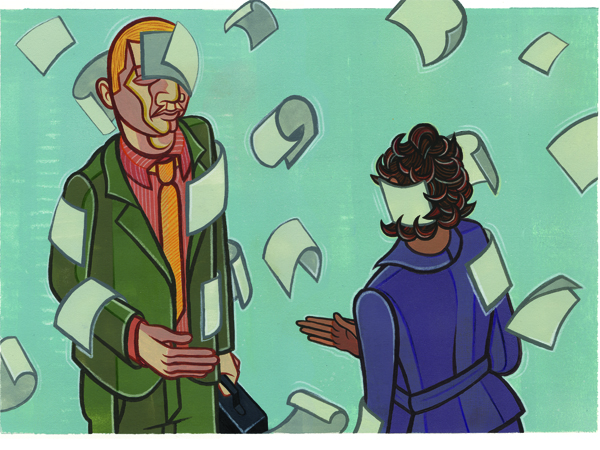 Can paperless government work in Philly?
Can paperless government work in Philly?
by Brian James Kirk
Long lines and mountains of paperwork await citizens seeking licenses and grants, trying to establish businesses or hoping to renovate their homes. City workers tap away at keyboards full-time, entering the requests into computers. The paperwork is then shipped to storage facilities to gather dust.
City Councilman Bill Green thinks this approach to city services is outdated—and unnecessarily costing Philadelphia millions of dollars. He wants to streamline these operations into a “paperless” process that utilizes digital technology instead of dead trees.
“This is stuff the private sector has been doing for 20 years,” Green says, seated in front of an iMac in his office in City Hall. “We haven’t adapted.”
According to a list of proposals drafted in response to the city’s budget shortfall in October, Green and fellow freshman council members Curtis Jones, Jr. and Maria Quiñones-Sánchez believe that a paperless city government could save $138 to $265 million annually.
Each year in the US, the average office employee generates approximately 10,000 sheets of paper, according to the Resource Conservation Alliance. Each sheet costs 13 to 31 times the purchase price when factoring in the secondary costs of printers, mailings and storage, according to case studies conducted by the Solid Waste Management Coordinating Board.
The council members envision enabling citizens and workers to conduct all city business by computer—online or at service kiosks throughout the city. Electronic forms would eliminate the need for data entry clerks who could be reassigned to other critical tasks. In city departments, the plan is to change attitudes and institute policies that would increase electronic distribution and decrease printing, photocopying and mailing.
Electronic form filing is a long-term project—Green believes it could be instituted in six or seven years—but paper consumption reform can happen now.
“I’ve been trying to work with the administration without mandating it legislatively,” he says. “I probably need to have [the] council put together a [paper] task force and start calling the administration in for it.”
Reducing consumption can be as simple as enabling double-sided printing or distributing digital documents instead of mailing them. But to realize the full extent of the proposed savings—and to begin on the long, near-mythical road to eliminating paper—the culture of consumption within city government will need to shift, according to Paul Taylor, Chief Strategy Officer of the Center for Digital Government.
“The old model said we print and then we distribute. The new model says we distribute and the recipient decides whether to print,” Taylor says in a telephone interview. “It’s mostly a volunteer effort that holds the most promise in paperless government.”
Paperless pay is another cost- and consumption-cutting measure the city is considering, one that Taylor says is a low-hanging fruit in the transition to digital government.
Green, Jones Jr. and Quiñones-Sánchez introduced Bill 080755 in October, and it would require all city employees and pensioners to receive pay by direct deposit or electronic debit cards. Additionally, pay stubs would only be electronically accessible. If the bill is passed, it could save a half-million dollars annually, according to a report by the City Controller’s office.
Taylor says that our economic straits could allow better opportunities for more paperless initiatives: “The good thing about doing this during a recession is that it allows for political conversations that would never happen during good times.
“Individuals are rethinking the process in a way that asks, ‘If paper never existed, how would we do this thing?’” Taylor says. “Very infrequently is the answer, ‘We’d wait for the invention of paper.’”


